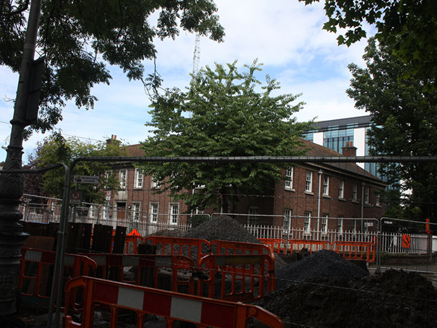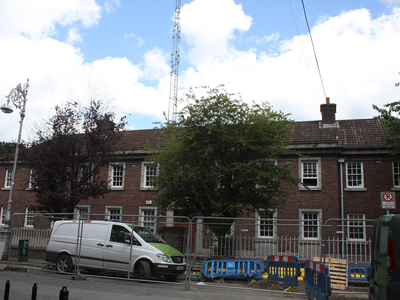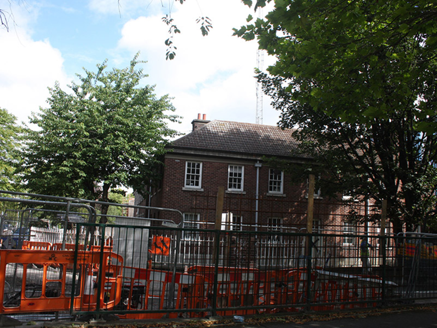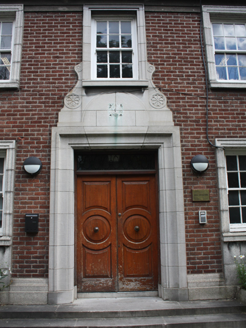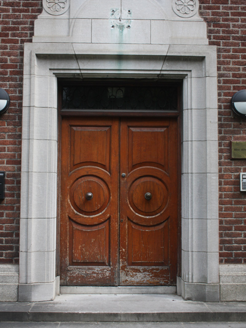Survey Data
Reg No
50110473
Rating
Regional
Categories of Special Interest
Architectural, Artistic, Social
Previous Name
Harcourt Terrace Garda Station
Original Use
Garda station/constabulary barracks
In Use As
Office
Date
1945 - 1950
Coordinates
316151, 232643
Date Recorded
26/07/2017
Date Updated
--/--/--
Description
Detached U-plan thirteen-bay two-storey former Garda station, built 1948, having central breakfront to front (west) elevation. Now used as offices. Hipped artificial slate roof, red brick chimneystacks with stepped granite caps, having terracotta pots. Projecting rendered parapet, granite eaves course. Red brick, laid in stretcher bond to walls, stepped granite plinth course. Square-headed window openings with granite sills, carved granite architraves to those to breakfront, panelled granite aprons to ground floor openings, having six-over-six pane timber sliding sash windows throughout. Limestone linking window over door, comprising carved limestone apron with scrolled ends and marigold motifs. Square-headed central door opening having carved limestone surround. Double-leaf timber panelled door and plain overlight with cast-iron detail. Granite steps. Red brick wall having concrete coping and wrought-iron railings enclosing site. Double-leaf wrought-iron gates to entrances, flanked by red brick piers with concrete coping.
Appraisal
This well-composed Garda station was built to a standard design by the Office of Public Works in 1948. Constructed during the Modernist era, it exhibits characteristic elements such as a horizontal emphasis. However, it is conservative in the Georgian influence evident in the design, as exemplified by its classically-influenced symmetry. Adherence to tradition is also apparent in the use of red brick and cut stone dressings. Carved stone and moulded render dressings articulate the façade, and enhance the external expression of the composition. The carved doorcase forms part of and entrance piece which provides an attractive focal point to the facade. Although its original function ceased when it was closed in 2012, the building continues to be a prominent and compelling feature at this canal-side corner.
